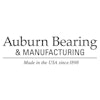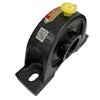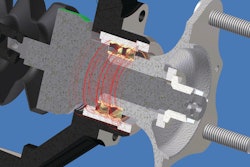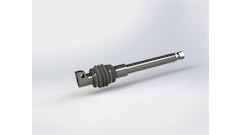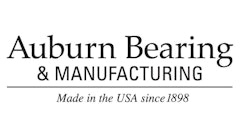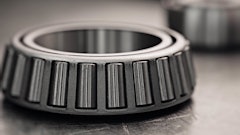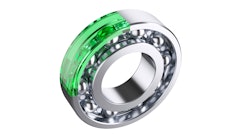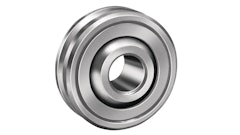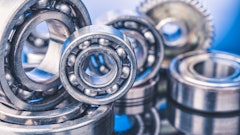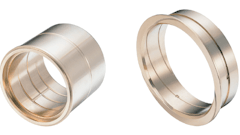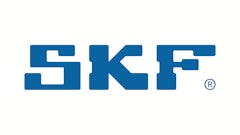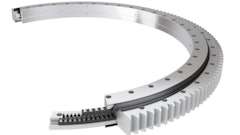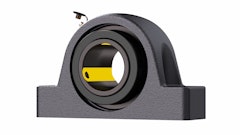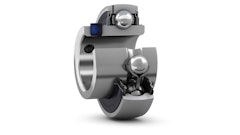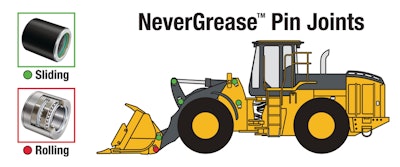
Machine greasing can be a slippery situation. It isn't uncommon for a joint to be over-greased, under-greased, or forgotten altogether during routine machine maintenance. It can be frustrating to be constantly greasing and dealing with the various challenges that can arise when using auto-lube systems, but John Deere's latest invention, the NeverGrease pin joint, is the life-long solution to all of your greasing woes.
The NeverGrease pin is "Lubricated for Life," eliminating grease fittings and the hassle of locating and preparing grease guns, while ensuring that the life of the pin is consistent from joint to joint, since there is no risk of missed or infrequent greasing. There is no need to replace missing or damaged grease zerks, or deal with unforeseen weather changes that do not allow for proper consistent greasing and maintenance.
Increased productivity, due to less downtime for repairs, saves the owner valuable resources, while at the same time allowing him to better spend his time and money advancing his operation. While traditional joints tend to wallow out and make joints loose, causing the operators to have to compensate, the NeverGrease pin joint does not. "The joints remain tighter with longer hours, which means the operation of the loader is more precise and therefore more productive as the unit ages," comments David O'Keefe, product marketing manager for John Deere Construction and Forestry Co.
Furthermore, the machine is cleaner without the grease, and thus is faster to repair, inspect and clean. Without sticky grease to cause dirt and debris to stick to the joints, the machine stays cleaner, longer. Also, inspecting a dry joint as compared to a greasy, lubricated joint, makes finding a fluid leak quick and easy for the operator or technician.
The development process
The need to address pin joint life came from a market study on product characteristics. "[The pin joint] portion of the study was focused on customer needs, not based on customer's experience with Deere or other competitors," notes O'Keefe. There, John Deere discovered an opportunity to improve a machine user's experience by enhancing pin joint life.
A team was assembled in order to test and analyze pin joint life. Ideas were drawn and theories were tested by the team. They formulated conclusions based on their findings, which were developed and tested to determine if any were achievable goals. The team then worked jointly with a major university for the component's testing and selection; the testing has continued for the components in wheel loader-specific applications regarding duty cycle and materials. In total, the entire process took Deere several years to complete.
"One of the greatest challenges we solved was correlating the data we received from testing fixtures, to field data from wheel loaders."
The NeverGrease pin joints are designed exclusively for John Deere four-wheel-drive loaders, specifically the 744J, 824J and 844J. At present, John Deere is working on finalizing the implementation of the pin joints on the 744J-844J wheel loaders. After implementation of the pin joint is complete, Deere plans to analyze opportunities for the pin joint in other wheel loaders and possibly expand into other products.
Location, location, location
The NeverGrease pin joints can be found on all joints in the boom, linkage and bucket of the wheel loaders. A rolling element is used for the boom-to-bucket joints, which receive the highest loads and rotation, while enduring consistent abuse throughout the day's work. Sliding elements are used for the remaining joints.
The sliding element is a filament wound bushing embedded with Teflon to act as the lubrication between the pin and the bushing, and allow the pin to glide along the bushing without creating too much friction.
The rolling element is a roller bearing, which is really a series of individual bearings. The individual, barrel-shaped bearings, allows for occasional twisting and better load distribution.
The pins used for both the sliding and roller elements are essentially the same chrome pin design. "The pin and rolling or sliding element are not a required set, which makes repair easier since the technician does not need to worry about keeping a matching set together," O'Keefe mentions. The pin joints themselves however, do vary in size, depending on the joint. "The pin joints are not interchangeable, meaning the rolling elements could not be exchanged with the sliding elements because they have different dimensions."
Bonus feature
Recently there have been a great many environmental concerns surfacing in the off-highway industry. The most obvious and talked about are the emission regulations from the Environmental Protection Agency (EPA), as well as the California Air Resources Board (CARB). The escalating restrictions are a constant reminder to manufacturers that serious change and development of "green" products is in order. Lubricants as well are under scrutiny as environmentalists, scientists and manufacturers search for a solution to satisfy everyone while making the off-highway industry cleaner.
Luckily, the John Deere NeverGrease pin joints have jumped the gun with an added bonus of being environmentally friendly. Considering there is no grease needed on the joints, there is significantly less grease on a machine, minimizing the potential for excess grease to fall onto jobsites when machines are operating, or in maintenance facilities when machines are being maintained.
Consider the forestry industry: a significant drop in grease and chemicals protects the trees, vegetation and water supplies from possible contamination due to leaking or dripping grease off of over-lubricated joints.
NeverGrease pin joints seem to be an investment for the future, allowing extensive savings on grease purchases, greasing supplies, labor and time, while steering clear of probable environmental lubrication restrictions for machinery.


